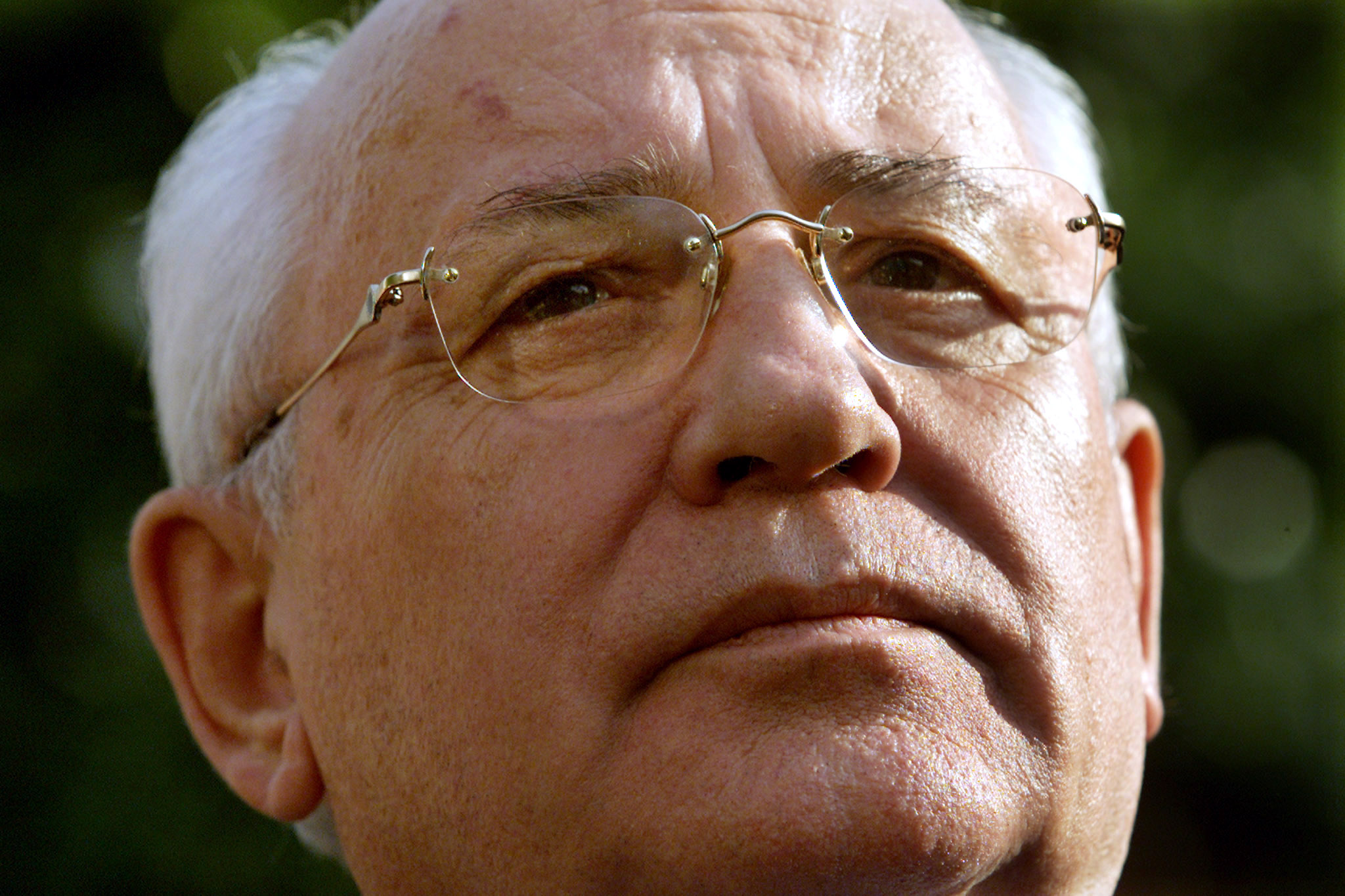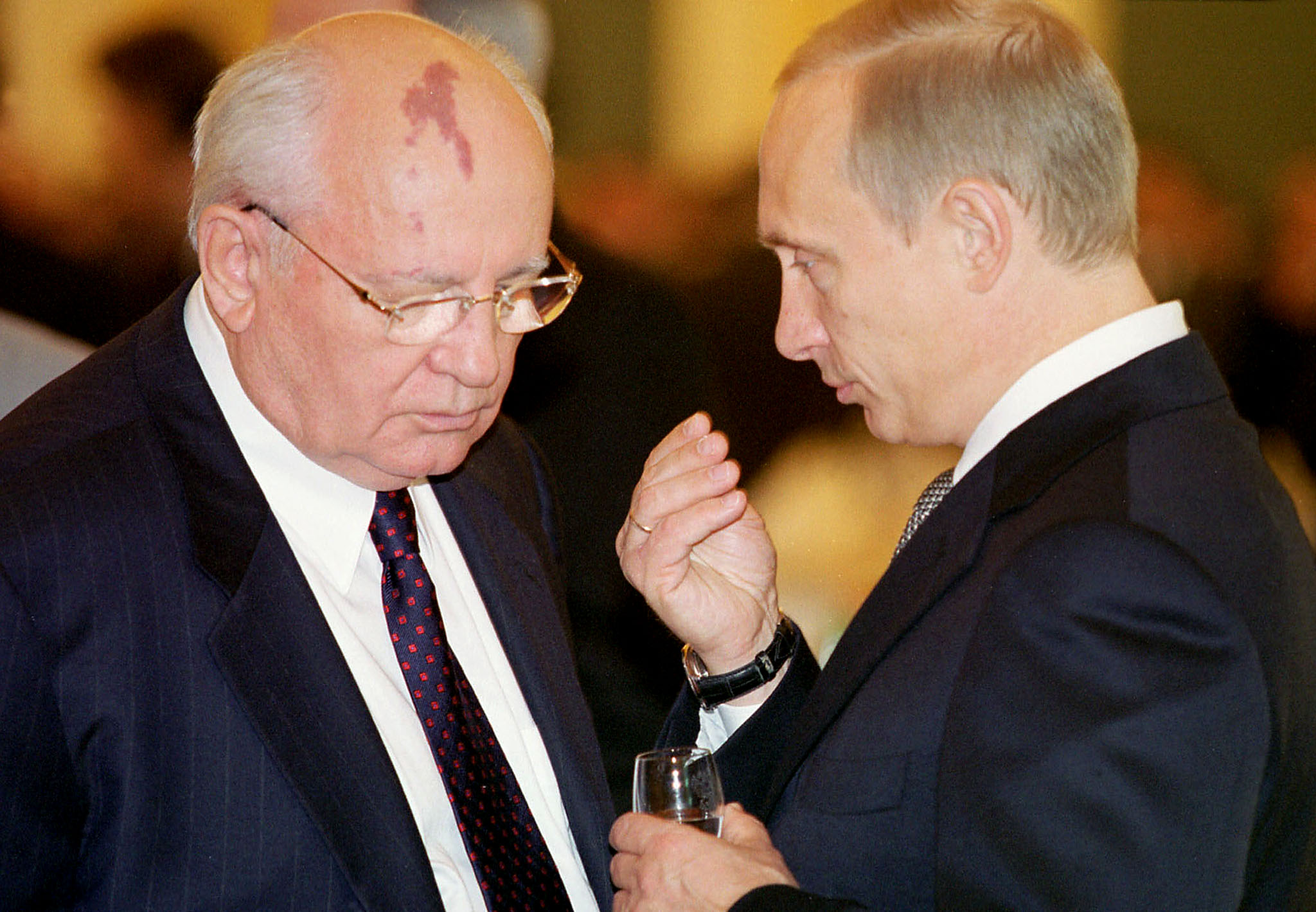
Former Soviet leader Mikhail Gorbachev, whose reforms put an end to the nuclear arms race and the Cold War, has died. He was 91.
Deeply revered in the West — where he was nicknamed “Gorby” — Gorbachev was in many ways a nemesis to Soviet leader Joseph Stalin, who built the Iron Curtain, turned most of Eastern Europe into a bloc of Moscow’s satellites and challenged Washington’s political supremacy in a Manichean confrontation that put the world on the brink of nuclear annihilation.
Gorbachev, the last leader of the Soviet Union, reversed the course laid down by Stalin and his successors in a series of somewhat idealistic and incoherent steps he called “perestroika” and “glasnost” — reconstruction and openness.
However, he saw his work as a return to the principles of Soviet founder Vladimir Lenin and an attempt to rebuild the failing command economy and humanise the rigorous communist doctrine.
“In a word, freedom came to the USSR, to Russia,” he said in a 2011 television show dedicated to the 25th anniversary of perestroika, adding that “in theory and in practice, we tried to get back to Lenin’s legacy”.
In the late 1980s, he stood as a political colossus, but his feet turned out to be made of clay.
Perestroika fuelled centrifugal tendencies that broke apart what the Soviet anthem referred to as “the unbreakable union of free republics”.
The 1991 Soviet collapse was also actuated by record-low oil prices that could no longer keep the Soviet economy afloat.

Even more lethal to Gorbachev’s domestic policies was a power play between him and his main rival, Boris Yeltsin, who declared Russia’s independence from the rest of the USSR, although nine Soviet republics, including Russia, voted to stay together in a 1991 referendum.
Gorbachev’s good intentions paved the way for a string of interethnic conflicts in the former Soviet Union and plunged Russia and the 14 newly independent ex-Soviet republics into a decade of painful economic transition and political upheavals.
After almost 10 years of Yeltsin rule marked by the first Chechen war, the rise of billionaire oligarchs who wrested control of most of Russia’s economy, and independence attempts by some regional governors, Russians started to associate democracy with nothing but chaos.
Under President Vladimir Putin, Russia started to drift to bellicose, neo-conservative nationalism, while pro-Western “colour revolutions” in Kyrgyzstan, Georgia, and Ukraine installed single-term presidents or resulted in Russian invasions.
For the most part, Gorbachev’s losses became the West’s gains.
“Central and Eastern Europe do not see an alternative to the present in its past,” political analyst Fyodor Lukyanov said in a 2014 opinion piece published in the Gazeta.ru daily. “In the former USSR there is no such feeling. In some places the situation is so dire that the Soviet past seems like a golden age, and a possible future does not promise anything.”
Many Russians had remained deeply frustrated by his rule, which took away their country’s superpower status, and Gorbachev’s sporadic attempts to return to politics found no support even among his once most-ardent sympathisers.
Russia’s post-imperial phantom pains, and the “fat years” of high oil prices that financed Moscow’s transformation into Europe’s bully, explain the populist appeal of Putin, the main gravedigger of Gorbachev’s achievements.

A modest background
A famine caused by “collectivisation”, or forced formation of collective farms, decimated the southern Russian village of Privolnoye shortly after Mikhail Sergeevich Gorbachev was born there on March 2, 1931, into a family of Russian and Ukrainian descent.
Both of his grandfathers were arrested and imprisoned during the Great Purge of the 1930s, and their ordeals would later influence his decision to break the Communist Party’s political and ideological monopoly.
Gorbachev started operating a combine harvester at age 15, and his tireless work brought him a government award, a chance to study law at Moscow State University — and the little red ID of a Communist Party member.
In the 1960s, Gorbachev quickly climbed the party ladder in his native Stavropol region while the Soviet Union enjoyed its superpower heyday and a brief cultural renaissance that would shape Russia’s intellectual history — and Gorbachev’s mindset — for decades to come.
Communist Moscow launched the first crewed space flight, nearly started a nuclear war during the Cuban missile crisis and installed pro-Moscow governments in former European colonies throughout the world.

Ascension to power
In 1971, Gorbachev became the youngest member of the Communist Party’s Central Committee, and in 1978, he moved to Moscow with his wife Raisa and daughter Irina.
His new status allowed him to visit several Western European countries and he was shocked to see the prosperity brought on by what Soviet propaganda called “the rotting capitalist system”.
Those were the years of domestic “stagnation” and the Cold War’s peak. Washington and Moscow conducted gigantic military drills and had a combined arsenal of some 40,000 nuclear warheads, according to a 1980 United Nations report.
But the arms race bled the Soviet economy dry, while dissent grew from within with the spread of dissident folk and rock music, and samizdat, the underground replication of banned books such as George Orwell’s 1984.
Soviet leader Leonid Brezhnev grew increasingly senile, spawning dozens of jokes that ridiculed his mumbling speech and bad memory. After his 1982 death at 77, two more aged Soviet leaders died within three years, including Yuri Andropov, the ex-head of KGB, Gorbachev’s mentor and Putin’s future role model.
On March 11, 1985, Gorbachev was voted the Communist Party’s General Secretary and became the only Soviet leader born after the 1917 Bolshevik revolution.
Stoking the perestroika
At 54, Gorbachev was at the helm of the world’s third most populous country that boasted an army of five million troops and officers, and could mobilise tens of millions of men with military experience.
But Russia’s economy and agriculture sector were far from healthy. There were shortages of basic consumer goods such as toilet paper or women’s shoes, and the country that once was Europe’s breadbasket had to rely on grain exports from the United States and Canada.
Gorbachev understood the necessity of reforms and was mostly inspired by the Scandinavian social democratic model. One of his first steps, however, made him highly unpopular. He raised alcohol prices and decreed to cut down vineyards. The general population responded by switching to moonshine production, but the anti-alcohol campaign led to a spike in birth rates.
In 1986, he declared the perestroika – or restructuring – of the Soviet economy, allowing small businesses and stopping the persecution of dissidents and the censoring of mass media. Once-banned art and information became widely available, and television shows featured shocking investigative reports, stories about the prosperous West, rock musicians, and avant garde artists.
His economic policies, however, were indecisive and, coupled with plunging oil prices, stoked hyperinflation. Food and consumer goods disappeared from government stores and were expensive in private shops and markets.
Gorbachev deployed troops to suppress ethnic tensions, student riots and the first attempts to declare independence from Moscow in the Baltic states — while his missteps were widely discussed and criticised.

‘Gorby’ charms the West
After his ascension to power in 1985, Gorbachev told a group of leaders from communist-bloc nations that they could go their own way, a decision that would later be jokingly dubbed “the Sinatra Doctrine” after the crooner’s song, “My Way”.
“I told them, ‘I want you to know that you are now responsible for the politics in your countries, for the choices you make, and your own people will hold you accountable,” he said in 2014 in Berlin, at a place where the infamous wall came down 25 years earlier.
His decision to withdraw the Soviet military from communist-bloc nations triggered the toppling of pro-Moscow regimes from Kabul to Bucharest, but the West applauded his decisions.
He and US President Ronald Reagan struck groundbreaking deals to cut down the number of nuclear warheads and missiles. In his 1988 Red Square speech, Reagan said that he no longer saw the USSR as the “evil empire”.
A year later, Gorbachev told the newly elected US President George HW Bush that their countries were “doomed” to cooperate.

The collapse
But the situation back home was tough. After the first free and democratic election in Soviet history, a new Congress of People’s Deputies consisted of dozens of non-communist legislators — many of whom were nationalists openly supporting their republics’ independence. Their debates were shown on national television, and millions of average Soviets were glued to their small screens listening and thinking.
The Baltic republics declared independence, and Romanian-speaking Moldova wanted to unite with Romania. In 1990, Gorbachev was elected the first — and last — Soviet president, and a year later, Yeltsin became the leader of the Russian Soviet Federation.
In August 1991, as the leaders of Soviet republics were about to sign a new treaty to reinvigorate the Soviet Union, a group of senior communists and army generals organised a coup and arrested Gorbachev in his Crimean residence.
Even though Gorbachev virtually dissolved the Communist Party, his popularity plunged to unprecedented lows while Yeltsin was taking over power and legislators in Ukraine and Belarus were voting for independence.
On December 8, Yeltsin and Ukrainian and Belarusian leaders signed a treaty declaring the formation of the Commonwealth of Independent States — and the dissolution of the Soviet Union. Leaders of other Soviet republics followed suit.
On December 25, the West received the most unexpected Christmas gift: Gorbachev stepped down as Soviet president and declared the Soviet Union dead.
“I cannot but admit that big mistakes have been made, when it came to reforming the [Soviet] Union, the [Communist] Party that turned from the initiator of perestroika into its biggest opponent,” he said in a 2014 television interview. “Sometimes, I thought, ‘maybe now is the time to use force without paying attention to blood?’ I thank – I don’t know who, myself, or God – that I never did that.”
The Soviet collapse was Gorbachev’s political death.








